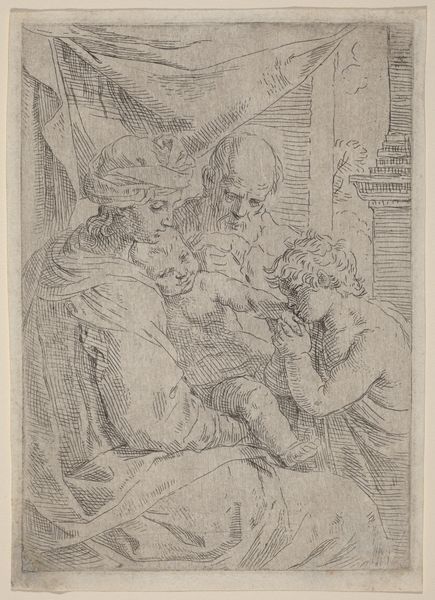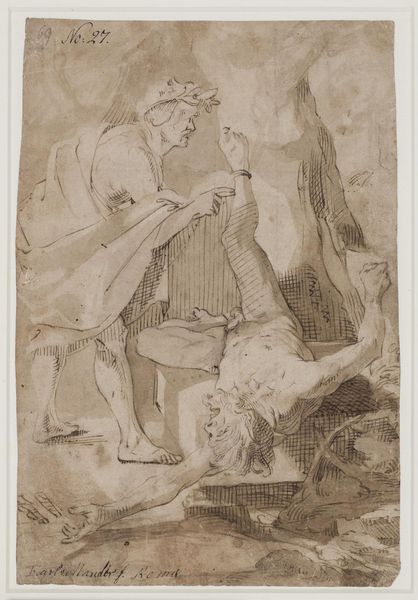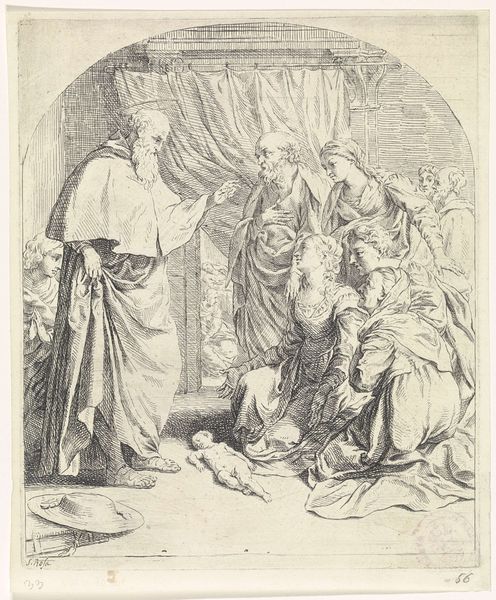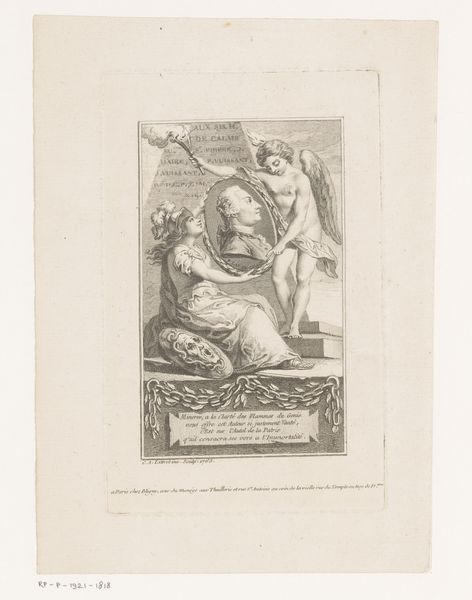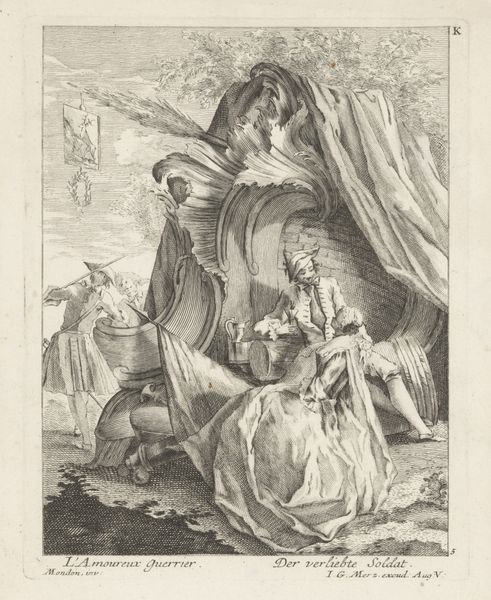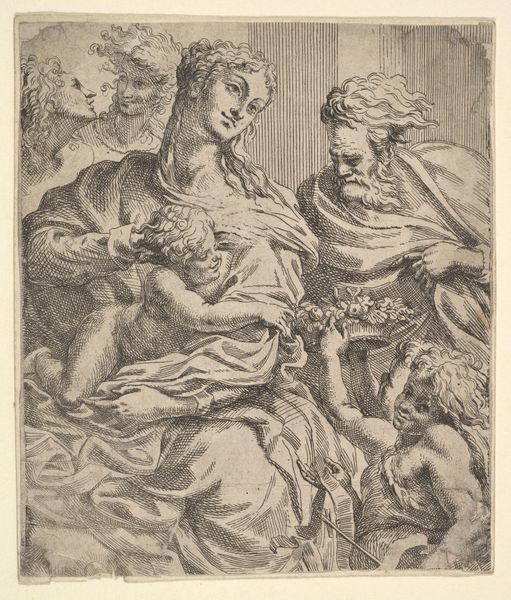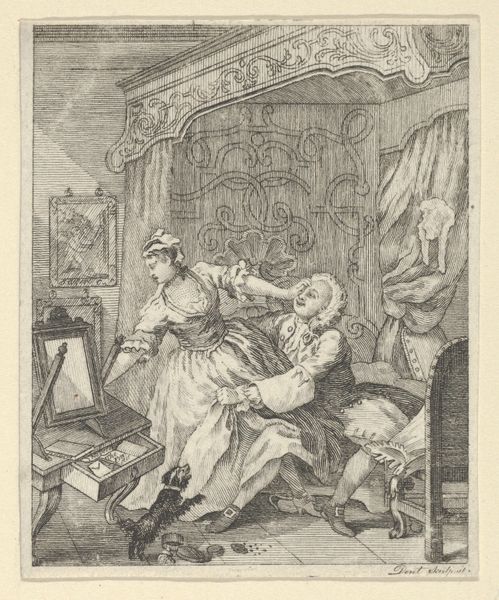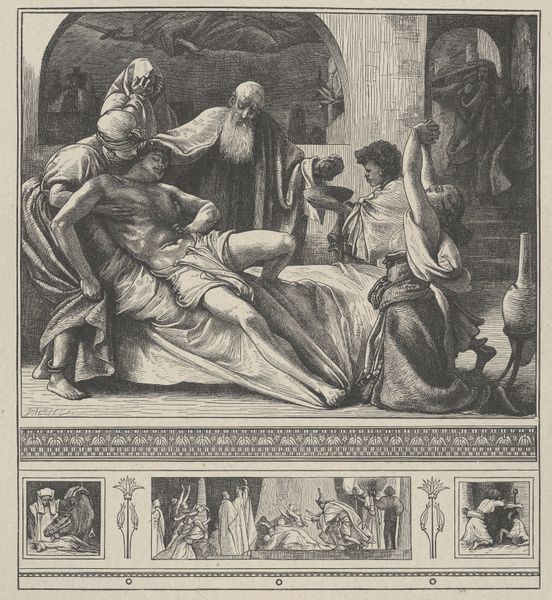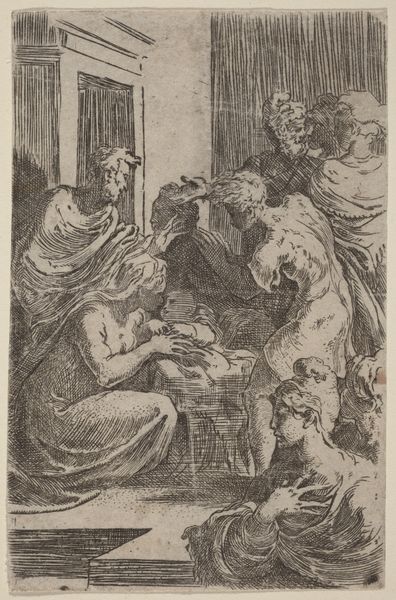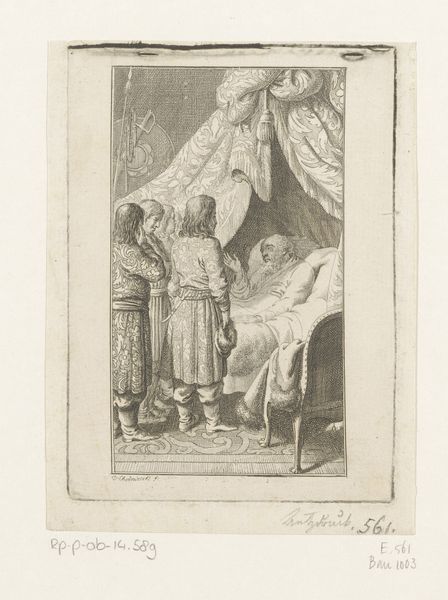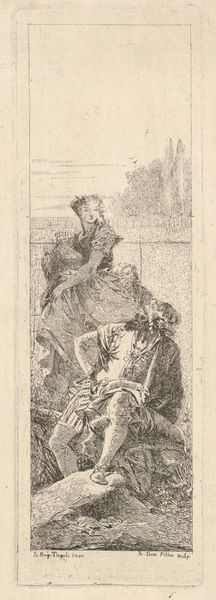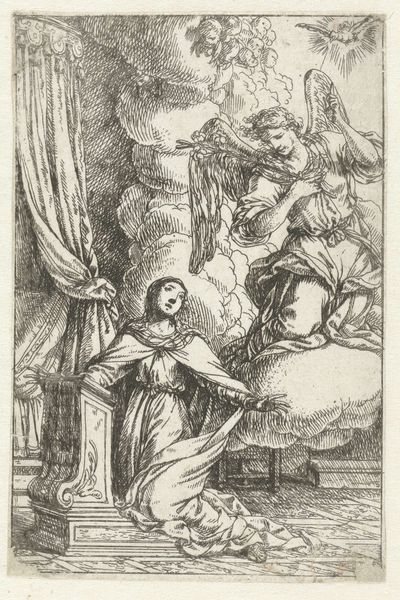
Vrouw op een bank omringd door vijf kinderen en toesnellende man 1750 - 1811
0:00
0:00
drawing, print, engraving
#
drawing
# print
#
figuration
#
line
#
genre-painting
#
history-painting
#
academic-art
#
engraving
Dimensions: height 284 mm, width 212 mm
Copyright: Rijks Museum: Open Domain
Editor: This engraving by Carl Friedrich Holtzmann, titled "Vrouw op een bank omringd door vijf kinderen en toesnellende man" from sometime between 1750 and 1811, depicts a domestic scene, but there's a real tension in the man's gesture. What strikes you about it? Curator: The tension you identify speaks volumes about gender roles and expectations in that era. Consider the woman, seemingly confined to the domestic sphere, surrounded by children – a visual representation of her societal role. Now, juxtapose that with the man's "toesnellende" or "rushing" presence. Does he represent disruption? Authority? Editor: That's a fascinating point. I was focused on the narrative, wondering what news he brings. Curator: And that narrative exists! But consider also how the image itself reinforces power structures. The woman is seated, almost weighed down, while the man is dynamic, entering the scene. This contrast highlights the unequal distribution of power within the family and, by extension, society. The children, too, become symbols of her confinement, visually anchoring her to that domestic space. How might feminist theory help us unpack that? Editor: So, rather than a simple family scene, it's a commentary on the restrictive roles placed upon women? Does the style – you know, the 'academic art' style – play a part in reinforcing that message? Curator: Precisely. The ‘academic’ style, with its emphasis on order and decorum, naturalizes these power dynamics. By presenting this scene in a seemingly objective manner, it subtly reinforces the status quo, making it appear as the natural order of things. Does seeing the piece this way change your reading of that "tension" you mentioned at the start? Editor: Absolutely. The man isn't just rushing in with news; he's asserting his presence in a space largely defined by the woman's responsibilities. I now see the artwork is less about a snapshot of family life, and more about the complex interplay of gender, power, and societal expectations. Curator: Indeed. By interrogating the artwork's historical and social context, we unlock its deeper, often subversive, meanings. I think we both deepened our understandings.
Comments
No comments
Be the first to comment and join the conversation on the ultimate creative platform.
